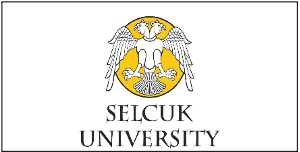| 2018, Volume 34, Number 3, Page(s) 185-188 |
| [ Summary (Turkish) ] [ PDF ] [ Similar Articles ] |
| Antimicrobial resistances of Escherichia coli isolated from Buteo rufinus |
| Mehmet Fatih Birdane1, Zeki Aras2, Gökçenur Sanioğlu Gölen2, Mehmet Volkan Yaprakci3, Hasan Hüseyin Hadimli4 |
| 1Department of Internal Medicine, Faculty of Veterinary Medicine, Afyon Kocatepe University, 03200, Afyonkarahisar, Turkey 2Department of Microbiology, Faculty of Veterinary Medicine, Aksaray University, 68100, Aksaray, Turkey 3Department of Surgery, Faculty of Veterinary Medicine, Afyon Kocatepe University, 03200, Afyonkarahisar, Turkey 4Department of Microbiology, Faculty of Veterinary Medicine, Selcuk University, 42003, Selcuklu, Konya, Turkey |
| Keywords: Long-legged Buzzards, Escherichia coli, cloacal swap, antimicrobial resistance |
| Downloaded:1133 - Viewed: 2786 |
|
Aim: In this study, it was aimed to determine microbiological
examination of cloacal swab specimens taken from Long-legged
Buzzards (Buteo rufinus) and antibiotic resistance of isolated
Escherichia coli (E. coli) strains.
Materials and Methods: The cloacal swab specimens were obtained from 24 Long-legged Buzzards which were admitted to Afyon Kocatepe University Veterinary Faculty clinics. The samples were cultured on different media for various bacteria (Salmonella species, E. coli, Mycoplasma, Gram-positive cocci, etc.). The media were incubated at 37°C in aerobic and microaerophilic conditions. ISO 6579 protocol was applied for Salmonella. In addition, antibiotic susceptibilities of the isolated bacteria were determined. Results: Twenty-four E. coli were isolated from all cloacal swab samples. In addition, Enterococcus faecalis was isolated from one sample. While all E. coli isolates were susceptible to florfenicol and ciprofloxacin, other antibiotics were found to be susceptible at different rates. Conclusion: This study is important because it is the first microbiological examination of cloacal swaps of Long-legged Buzzards in this Country. In addition, it was significantly evaluated that E. coli strains were resistant to various antibiotics with different ratios while no antibiotics are used using antibiotics in Long-legged Buzzards. |
| [ Summary (Turkish) ] [ PDF ] [ Similar Articles ] |





